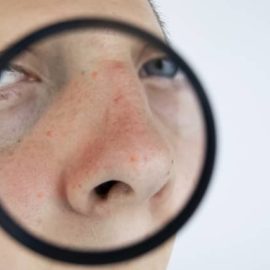The environment is tough on our hair – but we want products that are kind to the environment. In our current context, external stressors like heat, pollution, and humidity can damage the hair, leaving it feeling brittle and frizzy. The emotional stresses of urban life can also have an impact on hair texture and strength; but it doesn’t stop there. Sometimes, the damage is self-inflicted by heat styling and straightening. Consumers that use harsh styling methods like relaxers or straightening irons want the best straightening shampoos and conditioners to protect on every front, considering the other stressors their hair has to withstand.
From the impact of climate change to the pressures of life, to the stress of heat styling, consumers demand products that protect. This is because hair damage is a key concern globally: in the US, 45% of conditioner users say that when they are buying conditioner, strengthening hair is an important purchase factor. Meanwhile, in China, 62% of adults who style or treat their hair believe that a good styling product won’t damage it (Mintel, 2020).
However, hair is highly individualized and often a significant part of someone’s identity. Although damage may be a global concern, personalized products are integral to meeting consumer needs. For instance, the best straightening shampoo for African Americans may take a different form to a product targeted at the Chinese market. Here, we make the case for personalized protection in damage-preventing products.
Content
Personalized protection for every hair texture
Modern life is hard on hair, but how this damage manifests will depend on the individual’s hair texture. We’ve already mentioned the difference ethnicity can make on formulas, with different hair densities and textures requiring different care. Inclusive ranges of products are essential to remaining relevant in today’s market, especially as younger consumers are keen to see more diversity in the industry (Mintel, 2020).
However, personalization needs to penetrate further; for instance, Black women are placing greater importance on maintaining their natural hair. Instead of using a chemical relaxer, many more Black consumers are opting for protective straightening methods such as wigs installed on braided hair. This eliminates the need for heat and chemicals on virgin hair, but it requires two sets of products to maintain their natural hair and wigs or extensions. When it comes to damage control products, this is a significant opportunity for hair brands, especially as 87% of Black women in the US think healthy hair is the ultimate beauty accessory (Mintel, 2020).
Care for the hair and the planet
Although there is a greater emphasis on protection in the Black hair care market, the maintenance of two styles is time-consuming. Considering the speed of contemporary life, these damage protection products also need to be convenience-driven. This isn’t only the case for those managing afro styles and wigs; consumers across markets want convenience. For example, 86% of Thai consumers already perform part of their beauty routine on-the-go (Mintel, 2020).
However, when creating formulas, brands need to resist the temptation to conflate quick, instant-gratification products with throw-away hair care. Consumers want products that care for the environment as much as themselves, complementing a de-stressing sensory experience with the positivity and emotional well-being that comes from caring. For instance, a good on-the-go formula is a dry shampoo, which reduces water consumption. Considering six in ten American consumers are interested in water-free beauty products, this is a key opportunity (Mintel, 2020).
Equally, solid shampoos radically reduce the amount of packaging needed for shampoo products, while delivering a rich formula. In light of this potential for a high-concentration repairing formula, solid shampoos are also a good way to reduce damage by over-washing. For instance, if a consumer uses harsh heat styling products, a repairing solid shampoo could be an intriguing solution when it comes to selecting the best straightening shampoo. This is because the formula can heal damage while mitigating further stress caused by frequent washing.
The best straightening shampoo is taking a new form
The market for straightening products is changing. Consumers are increasingly oriented towards protection, both from the environment and heat styling. As these tendencies transform the way consumers manage their hair – for instance, the shift to braids and wigs from chemical relaxers – brands need to come up with innovative, inclusive products. The best straightening shampoo and conditioner won’t only maintain a style, it’ll protect from damage. This is key, considering 79% of Spanish women agree that avoiding hair damage is easier than treating it.
This is why Provital developed Keratrix™. This powerful natural active ingredient protects the hair fiber to prevent breakage. The blend of natural ingredients increases resistance and elasticity, caring for the hair while maintaining the style. The fluid active is easily dispersed in various shampoo and styling formulations without affecting its texture characteristics, making it the perfect addition to environmentally friendly formats. With its powerful protective properties and potential for inclusion in innovative formulas, Keratrix™ provides a solution to consumers’ evolving ideas about what constitutes the best straightening shampoo.
No comments yet
There are no comments on this post yet.





Leave a comment